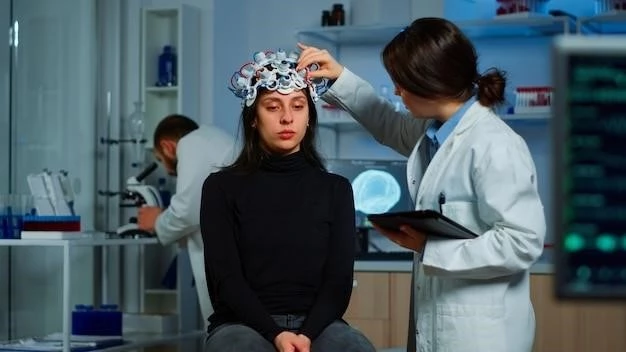Meningitis, Understanding the Infection of the Brain and Spinal Cord
Meningitis is a serious disease that involves the inflammation of the protective membranes covering the brain and spinal cord. It can be caused by viral or bacterial infections and presents with symptoms like headache, fever, stiff neck, confusion, nausea, vomiting, and rash.
I. Overview of Meningitis
Meningitis is a serious medical condition characterized by the inflammation of the meninges, the protective membranes surrounding the brain and spinal cord. This inflammation is typically caused by an infection, commonly either viral or bacterial.
Meningitis can lead to serious complications if not promptly diagnosed and treated. The condition can be life-threatening, especially in cases of bacterial meningitis. Understanding the symptoms and seeking medical attention early is crucial for a favorable outcome.
The infection can result in various symptoms, including severe headache, high fever, neck stiffness, confusion, nausea, vomiting, and in some cases, a distinctive rash. These symptoms can develop rapidly and require immediate medical intervention.
Diagnosing meningitis often involves a physical examination, analyzing the patient’s symptoms, and performing tests such as blood cultures, imaging studies, and a lumbar puncture to examine the cerebrospinal fluid. Treatment may include antibiotics for bacterial meningitis or supportive care for viral cases.
Prevention of meningitis is possible through vaccination, especially for certain strains such as Neisseria meningitidis and Streptococcus pneumoniae. Maintaining good hygiene practices and avoiding close contact with individuals who are infected can also help prevent the spread of the disease.
Meningitis is a serious condition that requires prompt medical attention. Understanding the causes, symptoms, and treatment options is crucial in managing this potentially life-threatening infection of the brain and spinal cord.
II. Symptoms of Meningitis
Meningitis presents a range of symptoms that can indicate infection and inflammation of the brain and spinal cord. Common symptoms include a sudden onset of severe headache, high fever, and neck stiffness, often making it painful to touch the chin to the chest.
Patients with meningitis may also experience confusion, altered mental status, irritability, and sensitivity to light. Nausea, vomiting, and lack of appetite are typical symptoms, along with a skin rash that may be present in certain types of meningitis.
Infants and young children may exhibit different symptoms, such as lethargy, irritability, poor feeding, and a bulging fontanelle (soft spot on the baby’s skull). In children, symptoms like a high-pitched cry, stiffness in the body and neck, and seizures may also indicate meningitis.
If you or someone you know experiences these symptoms, especially in combination with fever, it is crucial to seek immediate medical attention. Early diagnosis and treatment of meningitis can significantly improve outcomes and prevent serious complications.
It is important to note that the symptoms of meningitis can vary based on the underlying cause, whether it is viral or bacterial. Understanding these symptoms and their sudden onset can help in differentiating meningitis from other milder conditions, emphasizing the need for urgent evaluation by healthcare professionals.
III. Diagnosis and Treatment
Diagnosing meningitis involves a combination of clinical evaluation, laboratory tests, and imaging studies. A healthcare provider will assess the patient’s symptoms, perform a physical examination to check for signs like neck stiffness, and may recommend tests such as blood cultures to identify the causative agent.
A crucial diagnostic procedure for meningitis is a lumbar puncture, also known as a spinal tap, where a sample of cerebrospinal fluid is collected and analyzed for signs of infection, such as increased white blood cells. Imaging studies like a CT scan or MRI may also be conducted to assess the brain and spinal cord.
The treatment of meningitis depends on the underlying cause. Bacterial meningitis is considered a medical emergency and typically requires immediate hospitalization for intravenous antibiotics to combat the infection. Viral meningitis, which is generally less severe, may not require specific antiviral medications and can improve with supportive care.
Patients with meningitis may also receive medications to manage symptoms like fever, headache, and nausea. In severe cases where complications such as brain swelling occur, additional treatments may be necessary, including corticosteroids to reduce inflammation and intravenous fluids to maintain hydration.
Close monitoring of the patient’s condition is essential during treatment, as meningitis can progress rapidly and lead to serious complications, including neurological damage. Following the prescribed treatment plan, completing the full course of medications, and attending follow-up appointments are crucial for recovery and preventing recurrent infections.
IV. Prevention and Contagiousness
Preventing meningitis involves several key strategies, with vaccination playing a significant role in reducing the risk of infection. Vaccines are available for certain strains of bacteria that can cause meningitis, such as Neisseria meningitidis and Streptococcus pneumoniae;
Maintaining good hygiene practices, such as regular handwashing, covering coughs and sneezes, and avoiding sharing utensils or drinks with others, can help prevent the spread of respiratory infections that may lead to viral meningitis.
Being aware of the contagious nature of bacterial meningitis is crucial. The disease can spread through respiratory droplets from coughing or sneezing, as well as through close contact with an infected individual. Prompt identification and treatment of cases can help prevent further transmission.
For individuals at higher risk of meningitis, such as infants, young children, college students living in dormitories, and those with weakened immune systems, vaccination is particularly important. Healthcare providers can offer guidance on appropriate vaccination schedules based on age and risk factors.
Educating the public about the signs and symptoms of meningitis, as well as the importance of seeking medical attention promptly, is essential for early diagnosis and treatment. By following preventive measures and understanding the contagious nature of the disease, the incidence of meningitis can be reduced, contributing to improved public health outcomes.

V. Viral vs. Bacterial Meningitis
Meningitis can be categorized into two primary types⁚ viral and bacterial. Viral meningitis is more common and often less severe than bacterial meningitis. It is typically caused by various viruses, including enteroviruses, herpes simplex virus, and influenza.
Patients with viral meningitis may experience symptoms such as headache, fever, sensitivity to light, and a sore throat. Unlike bacterial meningitis, viral forms of the disease are usually self-limiting, and most individuals recover without specific treatment.
Bacterial meningitis, on the other hand, is a severe and life-threatening infection that requires immediate medical attention. Common bacteria responsible for bacterial meningitis include Streptococcus pneumoniae, Neisseria meningitidis, and Haemophilus influenzae type b.
Individuals with bacterial meningitis often present with symptoms like high fever, severe headache, neck stiffness, confusion, and a rapid onset of illness. The infection can progress rapidly, leading to neurological complications, sepsis, and even death if not treated promptly with antibiotics.
Differentiating between viral and bacterial meningitis is crucial for determining the appropriate treatment approach. Diagnostic tests such as a lumbar puncture can help identify the causative agent, guiding healthcare providers in selecting the most effective treatment strategy to combat the infection and prevent complications.
Understanding the differences between viral and bacterial meningitis, including their causes, symptoms, and treatment options, is essential for healthcare professionals and the general public in recognizing the urgency of seeking medical care for suspected cases of meningitis.
VI. Conclusion
Meningitis is a serious infection that affects the protective membranes covering the brain and spinal cord, leading to inflammation and potential life-threatening complications. Understanding the symptoms of meningitis, such as severe headache, fever, neck stiffness, and confusion, is crucial for early detection and prompt treatment.
Diagnosing meningitis involves clinical evaluation, laboratory tests, and imaging studies to determine the underlying cause and guide appropriate treatment. Bacterial meningitis requires urgent medical intervention with antibiotics, while viral forms may improve with supportive care.
Prevention strategies like vaccination, good hygiene practices, and recognizing the contagious nature of meningitis are essential in reducing the spread of the disease and protecting vulnerable populations. Early recognition of symptoms, especially in infants and children, is vital for improving outcomes and preventing long-term complications.
By raising awareness about meningitis, its causes, symptoms, and treatment options, we can work towards a healthier and safer community. Educating individuals about the importance of vaccination, hygiene, and seeking medical attention for suspected cases of meningitis is key to preventing the severe consequences of this potentially deadly infection of the brain and spinal cord.
Continued research, public health initiatives, and collaboration between healthcare providers and communities are essential in combating meningitis and reducing its impact on individuals and society as a whole; Together, we can strive towards a future where meningitis is better understood, prevented, and effectively managed for improved health outcomes for all.
